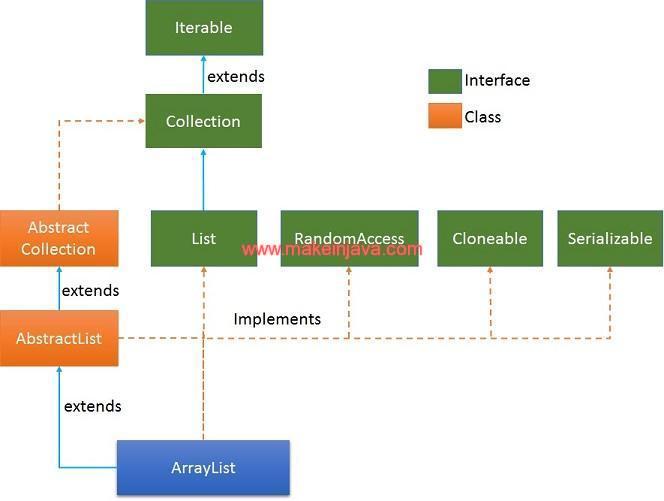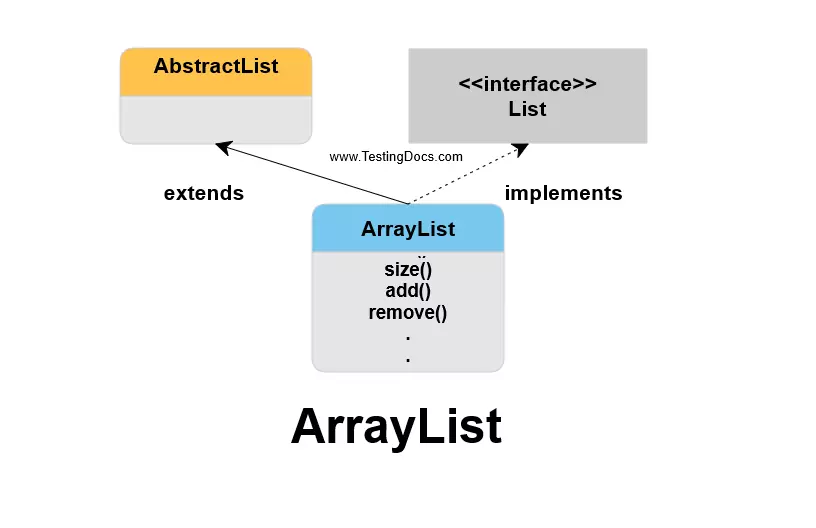
How can you change your program and keep all of your data, AND prevent yourself from having to do this again when you pick up another client? But now you have a new client who requires you to stock an additional 5 types. For years, you have only needed 30 different types of them, so it’s been easy to just use an array to keep track. Moving from Array to ArrayList and ArrayList to Array in JavaSo, let’s say that you have written a program to keep an inventory of how many nuts and bolts your company has on hand for repairing cat trees.
#JAVA ARRAYLIST TO ARRAY HOW TO#
Next we’re going to show you two methods to convert from an Array to an ArrayList and how to move back if you need to. So you can see that there are a few advantages to using an ArrayList instead of just an array. Or you can use trimToSize() which removes any empty indices at the end and trims the ArrayList to its current size. You can increase or decrease the size of the ArrayList using add(element), which places the element at the end of the List and increases the size by one if necessary. And that means that everything gets handled differently.įor one thing, because it is a List, you can manipulate it differently. That’s because an ArrayList doesn’t extend the Container class, it extends the List class. The ArrayListAn ArrayList may have a similar name to an Array but it is handled completely differently. So how do we take this static array with a set number of elements and convert it to an ArrayList? Well, first, let’s look at what an ArrayList is. You can also place the brackets after the declaration like so: Where datatype is any primitive data type like int, float, long, or even String. You should remember how to initialize an array in java it looks like this: But Arrays are static when created, which means that when you create one, you cannot change the number of items it holds. Arrays are an extension of the Container class in Java and can be useful as a way to temporarily hold a set of primitive data types when the quantity of data is specifically known. ! In today's lesson, we'll talk about How To Initialize An Array In Java and How Convert Array to an Arraylist. We can use the Java for-each loop to loop through each element of the arraylist. If you want to learn about all the different methods of arraylist, visit Java ArrayList methods. Searches a specified element in an arraylist and returns the index of the element. Specifies the total element the arraylist can contain. Searches the arraylist for the specified element and returns a boolean result. For example, import Ĭreates a new arraylist with the same element, size, and capacity.


To add a single element to the arraylist, we use the add() method of the ArrayList class. We will look at some commonly used arraylist operations in this tutorial: The ArrayList class provides various methods to perform different operations on arraylists. We will learn more about the add() method later in this tutorial. Here, we have used the add() method to add elements to the arraylist. In the above example, we have created an ArrayList named languages. To learn more, visit the Java wrapper class.Įxample: Create ArrayList in Java import Here, Integer is the corresponding wrapper class of int. Instead, we have to use the corresponding wrapper classes. It is because we cannot use primitive types while creating an arraylist. In the above program, we have used Integer not int.

For example, // create Integer type arraylist

Here, Type indicates the type of an arraylist. Here is how we can create arraylists in Java: ArrayList arrayList= new ArrayList() Hence, arraylists are also known as dynamic arrays.īefore using ArrayList, we need to import the package first. Unlike arrays, arraylists can automatically adjust their capacity when we add or remove elements from them. To handle this issue, we can use the ArrayList class. Once the size of an array is declared, it's hard to change it. In Java, we need to declare the size of an array before we can use it. It implements the List interface of the collections framework. In Java, we use the ArrayList class to implement the functionality of resizable-arrays.


 0 kommentar(er)
0 kommentar(er)
